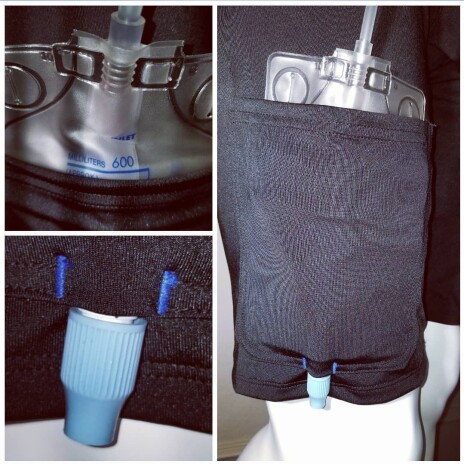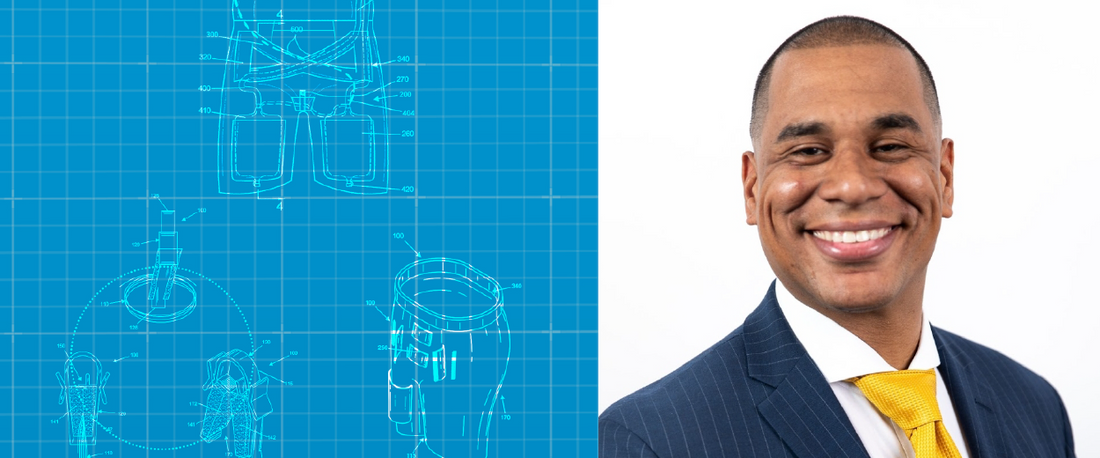After witnessing the discomfort of a patient using a catheter in the operating room, Brian Mohika, nurse innovator, U.S. Air Force Veteran and author of Let it Flow: One Nurse’s Entrepreneurial Journey, realized the need for a more comfortable, safer solution for leg catheter bags and decided to create it himself. By combining his insights as a nurse, his military-grade attention to detail and passion for making a positive impact on patients’ lives, Brian invented CathWear, a patented catheter leg bag underwear that aims to transform the catheter landscape for male and female patients. According to Brian, his comfortable, breathable brief design can grant individuals the chance to be confident, mobile and wear clothing of their choice without fear of their bags being exposed.
And now after experiencing the ups and downs of nurse entrepreneurship, from navigating business setbacks to receiving customer feedback that’s made it all worth the while, Brian is excited to share his insights with the many nurses who have great ideas but aren’t sure what to do next. The Johnson & Johnson Notes on Nursing team was thrilled to connect with Brian to learn about the inspiring journey of his nurse-led solution CathWear and hear the advice he has for his fellow nurse innovators:
J&J: What inspired CathWear and what’s next for your innovative solution?
Brian: I think my journey to developing CathWear can really be traced back to the origins of my nursing career. Before I was a nurse, I worked in Interventional Radiology as a Radiology Technologist. Often, I worked with the nurses and observed how they would interact with the patients. I loved how when patients needed someone, nurses were there to support them. Watching those interactions inspired me to become a nurse, to be there to help patients when they need it most and to understand patient needs better than anyone else.
Fast forward to 2012 when I was working as an operating room nurse: I was working with a patient who had a leg bag and he was visibly uncomfortable. The tubing was leaking and irritating the patient, and the discomfort on the patient’s face really affected me. I knew there had to be a better design for the catheter management system. I remember turning the corner in the hospital and experiencing a vivid vision of what would later become CathWear. After work that day, I went home and drew the design in detail. I bought Velcro and other supplies at a local store and my stepmother helped me design the initial prototype, an all-in-one solution for those with catheters that could hold leg bags discretely and comfortably.
I’m excited to share that the original prototype has evolved over the years and now we are on our fourth version, which is compatible with most catheters used today, specifically Biliary Drainage Catheters, Foley Catheters, Nephrostomy Catheters and Suprapubic Catheters. CathWear is selling online internationally—in Canada, South Africa and the United Kingdom—and it’s also covered in the United States by Medicare, which is a huge milestone for making this product more accessible to patients. Following positive feedback from so many who purchased the product over the past few years, my CathWear team and I are looking to tap into the urinary incontinence market, even creating a version of CathWear geared towards pediatric patients.
J&J: How does a product like CathWear improve quality of life and care for patients?
Brian: For patients leaving the hospital with a catheter, the typical protocol is that we send them home with a leg bag and instruct them to keep everything sterile, but it’s when they get home that they experience the most pain—whether from the leg bag or the tubing being pulled on from under their clothes. I would often hear complaints of discomfort and stories of how the leg bag would slide down the leg and create irritation, so patients would overtighten the straps of their leg bag to prevent that. However, this can create a torniquet-like effect which puts the patient at risk for complications—notably, catheter associated urinary tract infection (CAUTIs). We believe that CathWear has the potential to reduce CAUTIs because of how it’s designed. The tube is secured to a leg bag and in turn the leg bag is secured within a pouch, which provides stability for the tube. Due to this, patients don’t need to disconnect the tubing as often because the leg bag does not slide up and down like it normally would when taped on.
The example that I speak about most often that has really stayed with me is a person who bought CathWear and was able to confidently go to the beach with his family for the first time in 12 years. When he sent me a picture of himself at the beach and shared that it was my innovation that gave him the comfort and confidence to go again—I was thrilled. Stories like that motivate me and remind me that CathWear is making a positive impact. CathWear was about solving a problem—something that nurses do every day and is enabled by our medical expertise and unique, hands-on relationship with patients.


J&J: How has your unique lens as a veteran and a nurse contributed to the development of CathWear?
Brian: Nurses see patient needs in a special way based upon their education and patient insights, and I was able to create CathWear with this information at the forefront. I built CathWear through the lens of a nurse—and you can tell because CathWear features are designed never to impede the flow of gravity, since this can create reflux of urine back into the bladder, which is a cause of CAUTIs. Nurses understand the importance of easy access to tubing, so I carefully designed openings where the catheter tubing can come out easier. In addition, CathWear is made of breathable, durable and medical-grade materials intended to be worn under traditional clothing—helping reduce insecurity and preserve dignity and privacy while simultaneously creating comfort and improving their quality of life.
I also believe my experience in the military helped me build resilience to navigate entrepreneurial challenges and the organizational skills I needed to lead my CathWear team. The military taught me the importance of understanding all the steps that need to be done to finish the job—to be methodical and realize the value of small, fine details. I truly believe CathWear has been as successful as it has been because of the combination of these unique and powerful skillsets.
J&J: Do you have advice for nurses who may be afraid to step out of their comfort zone and embrace nurse-led innovation?
Brian: One of the biggest mistakes I made in entrepreneurship was giving up on one of my earlier ideas. A few years later when I saw that same idea on the market, I made a promise to myself to never let that happen again. I was going to believe in myself and my abilities as a nurse innovator. Nurses have a gift of seeing things that others don’t see, and those unique insights are undervalued in innovation. Nurses need to be ready to step up, push their ideas forward and take a chance. I would also tell nurses that they also need to be the experts in their solutions. Understand the market and understand the potential, because that’s how you can really get people to buy into your idea.
Not everyone is going to support what you’re doing, and that’s okay because there are people out there who can offer you that support. During my nursing career, I thought I had to choose between being a nurse and being an innovator—it wasn’t until I met nurses like me on LinkedIn that I realized I could be both. To meet other nurses with “entrepreneur” in their title who were really impacting healthcare inspired me to not just be confident in my innovation journey but also inspire nurses around the country to lean into their potential as nurse innovators, leaders and entrepreneurs.
The road to entrepreneurship is never easy. There are going to be good moments and bad moments, but you should never lose sight of the end result—transforming the lives of the patients we care for. I kept going because there were patients who needed me to keep going, like that patient who first inspired CathWear and the man who was able to go to the beach for the first time in years. I would encourage all nurses to be confident in themselves and keep going. There are more patients to be helped and solutions to be developed, and for me CathWear is just the beginning.


